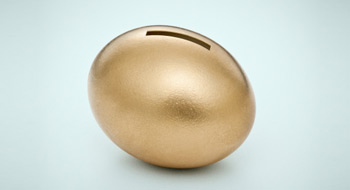
- Reader Alert: Read Part One of this series.
Gold will hit $2,500 within six months and its detractors risk getting wiped out, according to fans of the precious metal.
The bullion bugs making these predictions see no ready solution to the economic ills plaguing the world, and there is little standing between gold and a price tag beyond the wildest predictions made so far.
That includes $7,000 a troy ounce, predicted by at least one high-profile gold expert.
“I want people to protect themselves; if you’re holding conventional financial assets, particularly paper assets like bonds and bank deposits, you’re going to get killed,” says John Embry, chief investment strategist of Sprott Asset Management. “You’re going to lose 90% of your purchasing power before this is over.”
He says it is inevitable that gold will regain it place as the world’s reserve currency, displacing the U.S. dollar, and that the current fiat currency system in “in a terminal stage.”
It appears that gold is already the de facto reserve currency in the minds of certain central bankers, primarily those in Asia, who are starting to trade in their dollars for gold very surreptitiously. South Korea’s recent $1 billion gold purchase is barely the tip of the iceberg.
Korea, India, China, Russia and Mexico are on top of the increasing list of countries that are adding large quantities of gold to their reserves. “That’s fundamentally the biggest change in the gold market aside from this burgeoning investment demand; and I don’t see any change in this dynamic.”
Embry ascribes gold’s rise, in some measure, to the anaemic dollar. “I think the currency system is in deep jeopardy. It’s not the fact that gold’s going up; it’s the value of the paper in which it’s denominated that’s going down rapidly as you print trillions of dollars in North America and Europe.”
As faith in the greenback erodes, demand for gold is filling the void. It is the obvious, and perhaps the only, alternative, say gold watchers.
“People are increasingly less comfortable holding the U.S. dollar as their reserve currency and if you look around the rest of the world there’s no currency that appears to be a substitute,” says Embry. “Before we solve all [of our current] problems, gold will in some way be reintroduced into the system.”
He explains that gold typically moves in three stages. The first stage benefits the true aficionados who were holding the precious metal when it was unloved. The second stage rally occurs when well-informed investors join the gold rush.
“That’s where we are now,” he says. “The third stage, which I believe will happen some time in the next several years, is when the public [hitherto] blithely unaware of what’s going on, suddenly realizes it is the only thing to own.”
That’s what happened in 1979-80 when the gold price went from $250 to $850 in a heartbeat. “This time, who knows, it might get to levels that might surprise people.”
There will be corrections, but the depth of the corrections will be relatively shallow compared to the upsides it has already experienced and will experience in the future, he adds.
A shallow correction, normally a drop of $100 to $200, only creates another buying opportunity.
“I’ve made my money in this by never buying in spikes and always waiting for corrections,” says Embry. “If you do that it’s amazing how much you accumulate and one day you wake up and you say, ‘Holy mackerel! I’ve got a hell of price on this and I’ve got a lot of it’.”
Embry’s faith in gold is abiding, but he admits there will be a time to exit the position.
“If I suddenly saw an absolute stampede in gold and gold prices went from $1,900 to $4,000 in a relatively small space of time; if it’s on everybody’s tongue [and] CNBC was recommending it rather than panning it every opportunity they get; [if] people were lined up at the Bank of Nova Scotia to buy it, and people instead of selling their jewellery to be melted down were just slavering to buy it, then I’d say the sentiment had changed and I’d be very careful.”
All classic cues to divest from gold, but Embry is not worried as “we still have so far to go in terms of getting the public into the third-stage mania; I may be dead before it’s over.”
At the very least, he says, gold has got a minimum of three to four years to go. And if the currency system is reconstituted to give gold a dominant position, “then you’ll never have to worry about selling it because it’ll go back into the system at a dramatically higher price; there’s so much paper and so little gold at this point.”
Originally from our sister publication, Advisor.ca.
